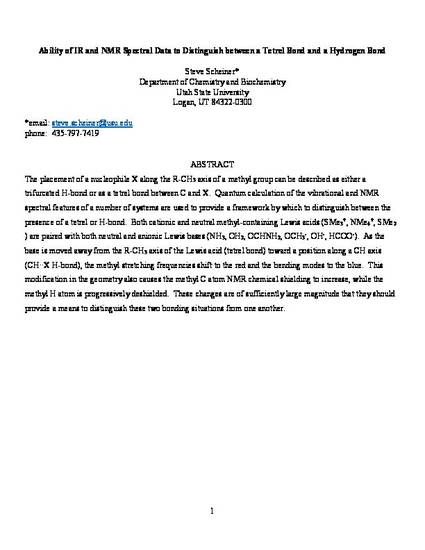
The placement of a nucleophile X along the R-CH3 axis of a methyl group can be described as either a trifurcated H-bond or as a tetrel bond between C and X. Quantum calculation of the vibrational and NMR spectral features of a number of systems are used to provide a framework by which to distinguish between the presence of a tetrel or H-bond. Both cationic and neutral methyl-containing Lewis acids (SMe3+, NMe4+, SMe2) are paired with both neutral and anionic Lewis bases (NH3, OH2, OCHNH2, OCH3-, OH-, HCOO-). As the base is moved away from the R-CH3 axis of the Lewis acid (tetrel bond) toward a position along a CH axis (CH··X H-bond), the methyl stretching frequencies shift to the red and the bending modes to the blue. This modification in the geometry also causes the methyl C atom NMR chemical shielding to increase, while the methyl H atom is progressively deshielded. These changes are of sufficiently large magnitude that they should provide a means to distinguish these two bonding situations from one another.

This document is the Accepted Manuscript version of a Published Work that appeared in final form in The Journal of Physical Chemistry A, copyright © American Chemical Society after peer review and technical editing by the publisher. To access the final edited and published work see https://doi.org/10.1021/acs.jpca.8b07631.